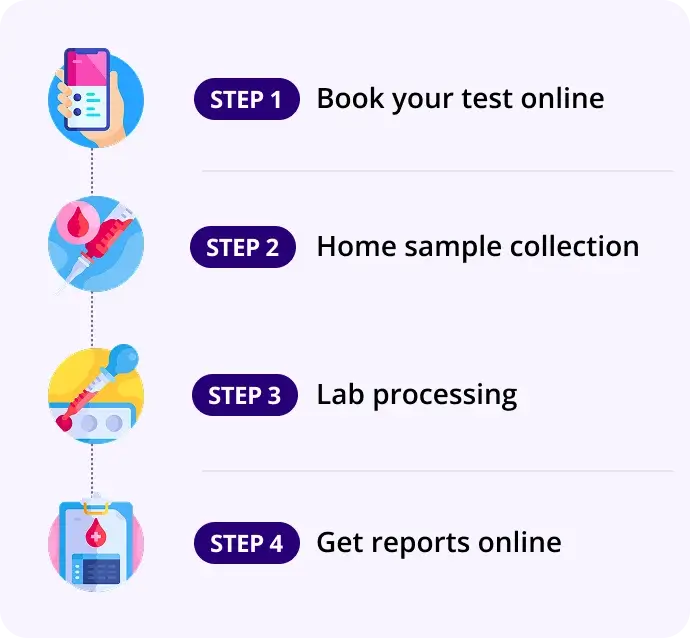Lead (Blood)
Report in 24Hrs
At Home
No Fasting Required
Details
The Blood Lead Test measures the level of lead (Pb) in the bloodstream
₹669₹1,870
64% OFF
🧪 What is the Lead (Blood) Test?
The Blood Lead Test measures the level of lead (Pb) in the bloodstream.
Lead is a toxic heavy metal that can cause serious health problems, particularly in children and pregnant women.
Lead exposure may occur through old paints, contaminated water, industrial exposure, toys, soil, or batteries.
❓ Why is the Test Done?
To:
- Screen for or confirm lead poisoning
- Monitor occupational exposure (e.g., in battery, paint, welding industries)
- Evaluate symptoms like developmental delay, anemia, abdominal pain
- Monitor children living in high-risk environments (e.g., old buildings, industrial zones)
🧬 How is the Test Performed?
- A venous blood sample is drawn.
- The lead level is measured using atomic absorption spectrometry (AAS), inductively coupled plasma mass spectrometry (ICP-MS), or graphite furnace atomic absorption (GFAAS).
Capillary (finger prick) samples may be used for screening but can give false positives due to skin contamination.
📊 Normal & Risk-Based Ranges
Blood Lead Level | Interpretation |
|---|---|
< 5 µg/dL | Acceptable (per CDC for children) |
5–9 µg/dL | Borderline; action may be required (especially in children) |
10–19 µg/dL | Elevated; monitor and reduce exposure |
20–44 µg/dL | Moderate toxicity; clinical evaluation required |
45–69 µg/dL | High; consider chelation therapy |
≥ 70 µg/dL | Severe toxicity; medical emergency |
CDC reference level for children (2023): ≥ 3.5 µg/dL may warrant intervention
📈 Interpretation of Results
Level | Likely Indication |
|---|---|
Low (<5) | No immediate concern, but exposure prevention advised |
Elevated (5–19) | Subclinical or mild poisoning, especially risky for children |
Moderate (>20) | Likely symptoms: abdominal pain, fatigue, developmental delay |
High (>45) | Clinical lead poisoning; possible chelation therapy required |
🧠 Associated Organs & Systems
System | Impact of Lead Toxicity |
|---|---|
Nervous system | Learning disability, irritability, seizures |
Hematologic | Anemia, hemolysis |
Renal | Nephropathy |
Gastrointestinal | Abdominal pain, constipation |
Reproductive | Miscarriage, low sperm count, fetal development issues |
Skeletal | Lead stored in bones long-term |
🔄 Related / Follow-Up Tests
- Zinc Protoporphyrin (ZPP) – for chronic lead exposure
- CBC – for anemia evaluation
- Iron Studies – low iron may worsen lead absorption
- Creatinine/BUN – assess kidney function
- Urine Lead (24-hour) – in some cases
- Liver Function Tests – to rule out other toxicities
- Neurodevelopmental assessment – in children with chronic exposure
✅ Fasting Required?
Test | Fasting Requirement |
|---|---|
Lead (Blood) | ❌ Not required |
📝 Summary Table
Parameter | Details |
|---|---|
What | Measures lead levels in blood (toxic heavy metal) |
Why | Screen for lead poisoning in children, workers, pregnant women |
Normal Range | < 5 µg/dL (CDC reference: <3.5 µg/dL for children) |
High Value | Risk of anemia, cognitive delay, nephropathy, etc. |
Follow-up Tests | ZPP, CBC, iron studies, neuro eval, kidney function |
Associated Organs | Brain, kidney, blood, bones, reproductive system |
Fasting Required | ❌ No |
How our test process works!

